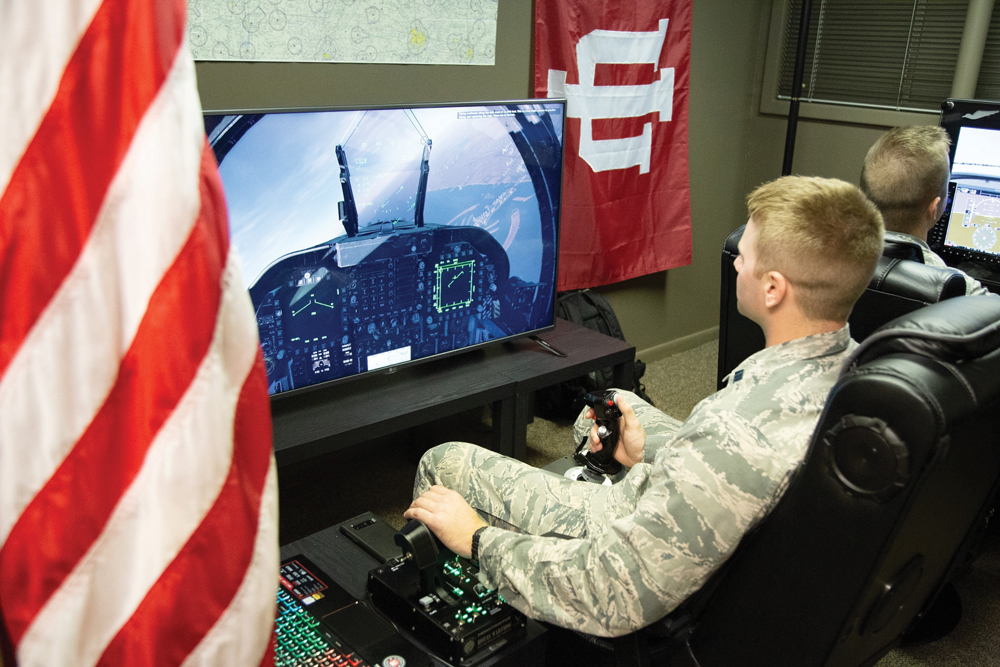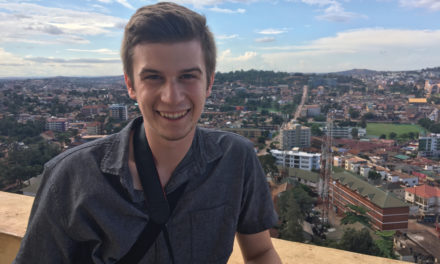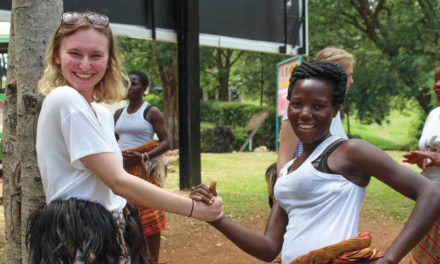
BY AARON BREWINGTON
While there are approximately 150 Air Force Reserve Officer Training Corps (ROTC) detachments at colleges across the country, the ROTC program at Indiana University offers cadets advanced training. Capt. Dustin T. Schimp says the program is one of about 10 in the nation to have a Federal Aviation Administration-certified Redbird TD flight simulator to train cadets on light, single-engine aircraft like the Cessna 182. Additionally, the program has a Digital Combat Simulator system.
The two systems provide different experiences: The Redbird simulates sitting in a cockpit with instruments in hand, while the combat simulator replicates flying a variety of aircraft in warfare scenarios.
“This [the Redbird] is the setup that most cadets are going to find at Initial Flight Screening,” Cadet Kyle Fricker, 22, says. “Anything you can do in the real world you can do on this system.”
Typically, cadets condition themselves with the Redbird virtual system before being taken to Monroe County’s Civil Air Patrol, where they are flown to a safe altitude and put in the pilot’s seat of a Cessna 182 with nearly identical controls to the simulator.
“We put them in front of the simulator to get some exposure before putting them in the Cessna so they are comfortable with the controls because, once the flight instructor turns it over to the cadet, essentially he’s saying ‘this is your plane,’” Schimp says.
As the Redbird is FAA–certified, it allows cadets to log seven of the necessary 35 hours of flight training they will need to obtain a private pilot certificate.
“It provides a huge cost savings,” Fricker says. “The average range for renting a plane plus instruction is $200 an hour, so you’re saving $1,400.”
The combat simulator is designed to replicate Specialized Undergraduate Pilot Training, progressing from smaller planes to more advanced combat aircraft.
“Unlike the FAA system, this is essentially a game,” Cadet Brice Weathers, 27, says. “It replicates essentially 95 percent of what you will be taught—and it’s a lot fun.”
Together, the systems give cadets a feel for what it is like to fly in a realistic environment without the real-world threat of war-time situations.





